Related Research Articles
Inspector Gadget is an animated superhero science fiction comedy series co-created by Andy Heyward, Jean Chalopin and Bruno Bianchi, and was originally syndicated by DIC Audiovisuel and Lexington Broadcast Services Company. The show revolves around the adventures of a clumsy, dim-witted police officer from Metro City named Inspector Gadget—a cyborg human with various bionic gadgets built into his body—who is sent on missions to thwart plans by his nemesis Dr. Claw, the leader of an evil organization known as "M.A.D.", while unknowingly being assisted by his niece Penny and their dog, Brain.

Marie de Rabutin-Chantal, marquise de Sévigné, also widely known as Madame de Sévigné or Mme de Sévigné, was a French aristocrat, remembered for her letter-writing. Most of her letters, celebrated for their wit and vividness, were addressed to her daughter, Françoise-Marguerite de Sévigné. She is revered in France as one of the great icons of French 17th-century literature.

Madeline Gail Kahn was an American actress, comedian, and singer. She is known for comedic roles in films directed by Peter Bogdanovich and Mel Brooks, including What's Up, Doc? (1972), Blazing Saddles (1974), Young Frankenstein (1974), High Anxiety (1977), History of the World, Part I (1981), and her Academy Award–nominated role in Paper Moon (1973).

Athene Seyler, CBE was an English actress.
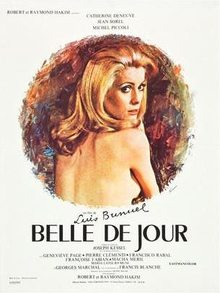
Belle de Jour is a 1967 French surrealist erotic psychological drama film directed by Luis Buñuel, and starring Catherine Deneuve, Jean Sorel, and Michel Piccoli. Based on the 1928 novel Belle de Jour by Joseph Kessel, the film is about a young woman who spends her midweek afternoons as a high-class prostitute, while her husband is at work.
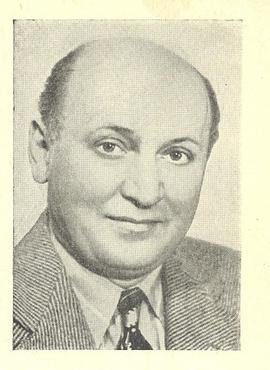
Ludwig Bemelmans was an Austrian-American writer and illustrator of children's books and adult novels. He is known best for the Madeline picture books. Six were published, the first in 1939.

Sabrina: The Animated Series is an American animated television series based on the Archie Comics series Sabrina the Teenage Witch. Produced by Savage Studios Ltd. and Hartbreak Films in association with DIC Productions, L.P., the series is an animated spin-off of the 1996–2003 live-action series Sabrina the Teenage Witch.
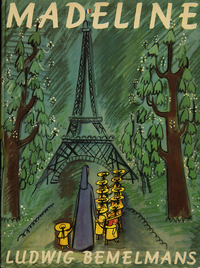
Madeline is a media franchise that originated as a series of children's books written and illustrated by Ludwig Bemelmans, an Austrian-American author. The books have been adapted into numerous formats, spawning telefilms, television series and a live action feature film. As a closing line, the adaptations invoke a famous phrase Ethel Barrymore used to rebuff curtain calls, "That's all there is, there isn't any more". The stories take place in a Catholic boarding school in Paris. The teacher, named Miss Clavel, is strict but loves the children, cares for them, and is open to their ideas.

Kirikou and the Sorceress is a 1998 French-language animated adventure fantasy film written and directed by Michel Ocelot. Drawn from elements of West African folk tales, it depicts how a newborn boy, Kirikou, saves his village from the evil witch Karaba. The film was originally released on 9 December 1998. It is a co-production between companies in France, Belgium and Luxembourg and animated at Rija Films' studio in Latvia and Studio Exist in Hungary.
What-a-Mess is a series of children's books written by British comedy writer Frank Muir and illustrated by Joseph Wright. The title character is a dishevelled, accident-prone Afghan Hound puppy, whose real name is Prince Amir of Kinjan. The book series was later made into two animated series, both narrated by Muir.
DIC Movie Toons were a series of animated made-for-TV movies produced by DIC Entertainment, which lasted for just one season (2002) on Nickelodeon in the United States. It started in 2002, beginning on October 6 and ending on December 29.

Silvia Monfort was a French actress and theatre director. She was the daughter of the sculptor Charles-Maurice Favre-Bertin and the wife of Pierre Gruneberg. She was named a Knight of the Legion of Honour in 1973, an Officer of Arts and Letters in 1979 and Commander of Arts and Letters in 1983. She is buried in Père Lachaise Cemetery.
Anacaona is the name of an all-female orchestra, founded in Havana in the early 1930s by Concepción "Cuchito" Castro Zaldarriaga and her sisters. Eventually, all 11 sisters joined the band. The band was formed during the Machado era when the political situation led to university closings, forcing Cuchito Castro to abandon her studies and her plan to start a dental practice. Instead, she chose a different career in 1932 by proposing a female septet to challenge the male-dominated son music. At the time, it was believed women were not capable of playing son. The band enjoyed close musical ties with well-known Cuban performers, in particular with Ignacio Piñeiro and Lázaro Herrera of the Septeto Nacional. Graciela, whose brother Machito laid the foundations of Latin Jazz, was Anacaona's lead singer for a decade.
Madeline is an animated preschool television series produced by DIC Entertainment, L.P., part of the Madeline media franchise. It began as a series of six television specials from 1988 to 1991, and then continued as Madeline and The New Adventures of Madeline from 1993 to 2001. The show is narrated by Christopher Plummer.

Madeline and the Bad Hat is a children's picture book by Ludwig Bemelmans. It features the popular children's character Madeline. It was first published by Viking Press in 1956.
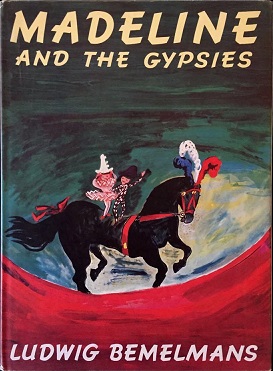
Madeline and the Gypsies is a children's picture book by Ludwig Bemelmans featuring Bemelman's popular character Madeline. It was first published in 1959 by Viking Press under the Viking Juvenile imprint.
Madeline is a book series, part of the Madeline media franchise, originally created by Ludwig Bemelmans. The series follows the daily adventures of Madeline, a seven-year-old girl attending a boarding school in Paris with eleven other girls, under the care of their teacher, Miss Clavel.
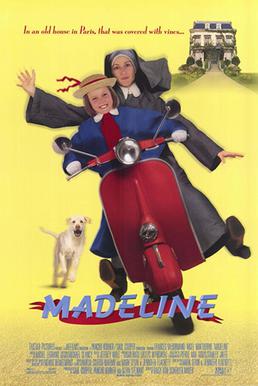
Madeline is a 1998 family comedy film adaptation of the children's book series and animated television series of the same name. The film starred newcomer Hatty Jones as the titular character with Frances McDormand and Nigel Hawthorne in supporting roles as Miss Clavel and Lord Covington respectively. The film encompasses the plots of four Madeline books. It was released on July 10, 1998 by TriStar Pictures.

Madeline is a 1939 book written and illustrated by Ludwig Bemelmans, the first in the book series of six, later expanded by the author's grandson to 17, which inspired the Madeline media franchise. Inspired by the life experiences of its author/illustrator, the book is considered one of the major classics of children's literature through the age range of 3 to 8 years old. The book is known for its rhyme scheme and colorful images of Paris, with an appeal to both children and adults.
References
- ↑ McCormick, Moira (1999-06-12). Buena Vista to Roll Out Promotions for End-Of-'99 Releases. p. 67. Retrieved 2019-07-09.
{{cite book}}:|magazine=ignored (help) - ↑ McCormick, Moira (1999-06-12). Buena Vista to Roll Out Promotions for End-Of-'99 Releases. p. 67. Retrieved 2019-07-09.
{{cite book}}:|magazine=ignored (help) - ↑ "DIC taps Ellis". Variety . Retrieved July 19, 2021.
- ↑ "The Madeline Movie: Lost In Paris". Amazon.com . 13 April 2010. Retrieved 2019-07-12.
- ↑ "Madeline Lost in Paris". Amazon.com . 12 November 2013. Retrieved 2019-07-12.
- ↑ "MADELINE LOST IN PARIS |DVD & Blu-Ray". umbrellaent.com.au. Retrieved 2019-07-12.
- ↑ William David Lee (2010-04-17). "Madeline Movie, The: Lost In Paris - DVD review". dvdtown.com. p. 2. Archived from the original on 2010-09-25. Retrieved 2019-07-12.
- ↑ Under Walt Disney Home Video imprint